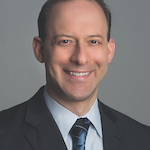Since the start of COVID-19, otolaryngologists have been seeing many patients who would normally be taken care of by primary care doctors, a situation that causes problems with scheduling and care for patients who most need specialists. “This influx of patients isn’t sustainable, as it dilutes the patient population being seen that requires otolaryngologic care,” said Sarah Bowe, MD, a pediatric otolaryngologist in San Antonio, Texas. “I think this trend is multifactorial and, quite possibly, that it will continue to worsen.”
Explore This Issue
August 2022Multiple Drivers
 “There were already existing concerns regarding a primary care shortage prior to the pandemic. Now, the added strain on the healthcare system and providers may accelerate the retirement timeline for many of those in active practice,” Dr. Bowe said. “During the pandemic, we saw negative impacts on access to care due to some of the safety requirements imposed by COVID-19. Now, we may continue to see challenges in access to care and, subsequently, timely management of certain disease states.”
“There were already existing concerns regarding a primary care shortage prior to the pandemic. Now, the added strain on the healthcare system and providers may accelerate the retirement timeline for many of those in active practice,” Dr. Bowe said. “During the pandemic, we saw negative impacts on access to care due to some of the safety requirements imposed by COVID-19. Now, we may continue to see challenges in access to care and, subsequently, timely management of certain disease states.”
Even before the pandemic, many otolaryngologists were seeing patients who could have been cared for by primary care offices, either due to patient preference for specialized care or lack of access to primary care professionals, said Michael J. Brenner, MD, associate professor in the department of otolaryngology–head and neck surgery at the University of Michigan Medical School in Ann Arbor. “During the pandemic, labor shortages and capacity strain rippled through the workforce, disrupting both primary care and specialist practice. What we’re seeing is a confluence of factors that involve not only a shortage of primary care professionals but also too few nurses and office staff, with pent-up demand for care,” Dr. Brenner said.
What we’re seeing is a confluence of factors that involve not only a shortage of primary care professionals but also too few nurses and office staff, with pent-up demand for care.
—Michael J. Brenner, MD
Many primary care physicians shifted to telemedicine during the pandemic. “As such, and because you cannot examine an ear or really look inside a nose or palpate the neck via telemedicine, they may be asking their patients to see otolaryngologists more frequently than before,” said Sujana S. Chandrasekhar, MD, a partner at ENT & Allergy Associates in New York City.
Along with reduced access to primary care, there’s an increased prevalence of symptoms relating to real and perceived effects of COVID-19 and its variants.
“COVID-19 has wreaked havoc in the ear, nose, and throat region, and this has driven demand for our services, as patients are more aware [of] and concerned regarding the long-term consequences of infection,” said Eugene Brown, MD, an otolaryngologist in Charleston, SC. “I think that fear of long-term viral complication has driven demand for otolaryngologic services. Concerned patients are seeking specialty advisement early to try to minimize complications.”
